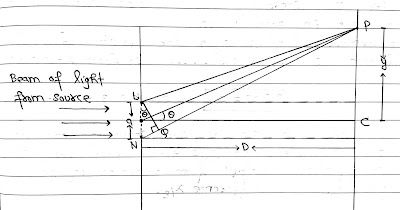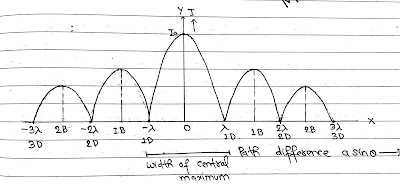Chapter-10|Wave Optics|NCERT 12th Physics:
Diffraction of Light at a Single Slit:
A parallel beam of light with a plane wavefront is made to fall on a single slit LN. As LN=a is of the order of wavelength of light, therefore diffraction occurs on passing through the slit.
The wavelets from the single wavefront reach the centre C on the screen in same phase and hence, interfere constructively to give central maximum (bright fringe).
The diffraction pattern obtained on the screen consists of a central bright band, having alternate dark and week bright band of decreasing intensity on both sides.
When there are more than one source of light, then we can establish the condition for secondary Maxima. The slit is divided into 2,4,6,……. equal parts such that the corresponding wavelets from successive regions interfere with path difference of λ/2.






